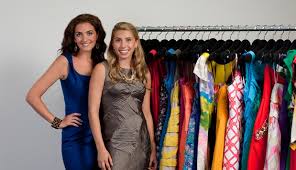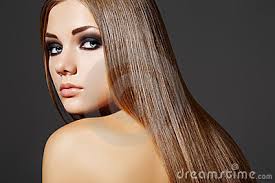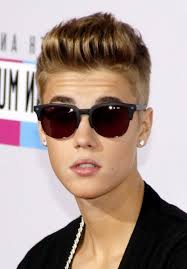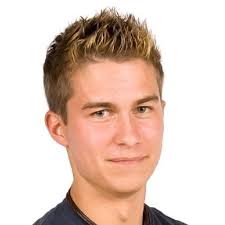A hairstyle, hairdo, or haircut refers to the styling of hair, usually on the human scalp. The fashioning of hair can be considered an aspect of personal grooming, fashion, and cosmetics, although practical, cultural, and popular considerations also influence some hairstyles.[1] The oldest known depiction of hair braiding dates back about 30,000 years. In ancient civilizations, women’s hair was often elaborately and carefully dressed in special ways. In Imperial Rome, women wore their hair in complicated styles. From the time of the Roman Empire[citation needed] until the Middle Ages, most women grew their hair as long as it would naturally grow. During the Roman Empire as well as in the 16th century in the western world, women began to wear their hair in extremely ornate styles. In the later half of the 15th century and on into the 16th century a very high hairline on the forehead was considered attractive. During the 15th and 16th centuries, European men wore their hair cropped no longer than shoulder-length. In the early 17th century male hairstyles grew longer, with waves or curls being considered desirable.
The male wig was pioneered by King Louis XIII of France (1601–1643) in 1624. Perukes or periwigs for men were introduced into the English-speaking world with other French styles in 1660. Late 17th-century wigs were very long and wavy, but became shorter in the mid-18th century, by which time they were normally white. Short hair for fashionable men was a product of the Neoclassical movement. In the early 19th century the male beard, and also moustaches and sideburns, made a strong reappearance. From the 16th to the 19th century, European women’s hair became more visible while their hair coverings grew smaller. In the middle of the 18th century the pouf style developed. During the First World War, women around the world started to shift to shorter hairstyles that were easier to manage. In the early 1950s women’s hair was generally curled and worn in a variety of styles and lengths. In the 1960s, many women began to wear their hair in short modern cuts such as the pixie cut, while in the 1970s, hair tended to be longer and looser. In both the 1960s and 1970s many men and women wore their hair very long and straight.[2] In the 1980s, women pulled back their hair with scrunchies. During the 1980s, punk hairstyles were adopted by some people.
The Right Haircut For You
There’s nothing worse than getting your haircut and realising it doesn’t suit your face shape. Hair trends change all the time, yet the majority of styles are not ‘one size fits all’ – some WILL look better with different face shapes, therefore it’s extremely important to take this into account when choosing your next haircut.Each person is different and our face shapes vary massively. Some men will have to take their face shape into account more than others; the majority will want to create the impression of a squarer face shape, which is both incredibly masculine and widely recognised as the most pleasing to the eye.To achieve this ideal shape, long faces need shortening, wide faces need lengthening and angular faces would require a softer finished haircut.Many customers come into the salon well prepared, with pictures or ideas about how they would like their hair. However, as a stylist, I find it’s vital that you consider an individual’s face shape when doing a consultation.I would always suggest asking your stylist if they think the haircut you have chosen will suit your face shape – if they don’t think it will, ask how you can alter the style to make it work for you.A haircut is personal and should be created to suit your face shape and hair type, as well as your image and personality. With this in mind, today I will break down the most prominent face shapes that are seen on male clients, and provide some general advice/guidelines as to hairstyles that suit each…



